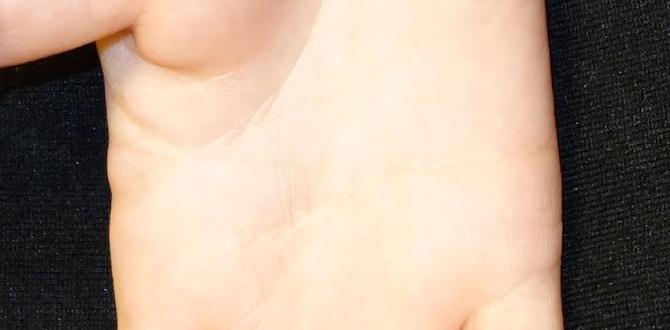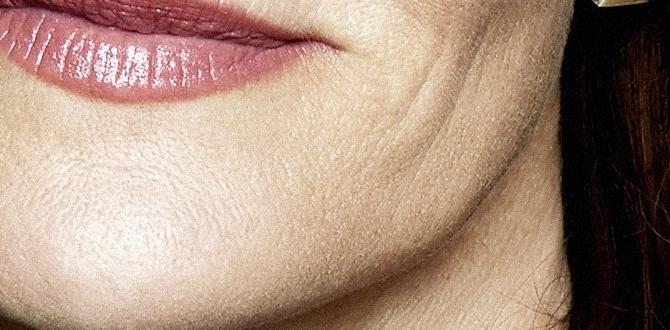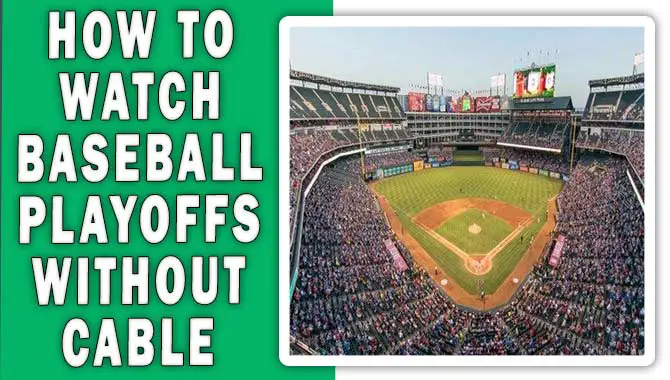Champro Throat Guards are a certified Little League essential, offering vital protection for young catchers by safeguarding the throat area and preventing serious injuries. Essential for any young player stepping behind the plate, they are a simple, affordable, and effective way to boost safety and confidence.
Hey there, young sluggers and dedicated coaches! Ever watch a catcher take a foul ball to the throat and feel that knot of worry in your stomach? It’s a scary sight, and unfortunately, it happens more often than we’d like in Little League. That’s where a simple, yet incredibly important piece of gear comes in: the Champro throat guard. Think of it as a little league catcher’s best friend. It’s designed to be tough yet comfortable, giving your kiddo the confidence to crouch low and block pitches without fearing a painful jolt. We’re going to dive into why this gear is a big deal for safety, how it works, and why Champro is a name you can trust. Let’s get your young catcher behind the plate with peace of mind!
Champro Throat Guard: The Little League Catcher’s Unsung Hero
When you think about baseball equipment, bats, gloves, and helmets usually come to mind first. But for a catcher, especially a young one just starting out in Little League, there’s another piece of gear that’s just as crucial, if not more so: the throat guard. The Champro throat guard is a prime example of protective equipment that’s become a standard for a reason. It’s a simple attachment, but its impact on player safety is massive. This guide is all about making sure you understand why this gear is a game-changer for kids playing baseball.
Why Catchers Need Throat Protection
Behind the plate, a catcher is in a unique and often vulnerable position. They’re constantly focused on the pitch, tracking it, and then preparing to block it if it’s thrown low. This means their head is often not in the safest position to absorb impact as a batter might be. Foul tips, wild pitches, and even errant throws can all come at the catcher at high speeds, and the throat area is particularly susceptible to injury. These injuries can range from painful bruises to more severe and debilitating conditions like fractures or airway compromise. Protective gear is designed to mitigate these risks.
The statistics on youth sports injuries, while sometimes daunting, highlight the importance of appropriate safety equipment. According to the Consumer Product Safety Commission (CPSC), proper protective equipment is a key factor in injury prevention across many sports, including baseball. For catchers, this means more than just a mask and chest protector; it extends to safeguarding vulnerable areas that might not be fully covered.
The Champro Throat Guard: Features and Benefits
Champro has built a reputation for providing durable and reliable sports equipment, and their throat guard is no exception. Designed specifically to integrate with many popular catcher’s masks, it offers a straightforward solution to a significant safety concern. Let’s break down what makes it a standout choice for Little League catchers:
Key Features
- Durable Construction: Typically made from high-impact plastic that’s built to withstand repeated contact with baseballs.
- Universal Fit (Often): Many models are designed to attach to a wide range of standard catcher’s masks, making them versatile.
- Lightweight Design: It adds protection without significantly increasing the weight of the mask, allowing for agility and comfort.
- Streamlined Profile: It’s designed to not obstruct the catcher’s vision or interfere with their ability to call for the ball.
- Easy Installation: Most throat guards can be attached or removed with minimal effort, usually with straps and clips.
Tangible Benefits for Young Catchers
- Injury Prevention: The primary benefit is reducing the risk of direct impact to the throat and neck area.
- Increased Confidence: Knowing they have reliable protection allows young players to focus more on their game and less on fear of getting hit. This can lead to more aggressive blocking and better defensive performance.
- Comfort and Mobility: Unlike bulkier, more expensive alternatives, a well-designed throat guard doesn’t hinder movement or cause excessive heat.
- Cost-Effective Safety: Compared to the potential medical costs of an injury, a throat guard is an incredibly affordable investment in a player’s well-being.
- Rule Compliance: In many leagues, protective equipment requirements are strict. A throat guard ensures compliance and a safer environment.
How It Works: The Science of Protection
A throat guard functions through a combination of impact dispersion and deflection. When a baseball strikes the guard, the material absorbs some of the initial force. The shape and angle of the guard are also engineered to deflect the ball away from the catcher’s sensitive throat area. It’s not about completely stopping the ball – that’s the job of the mask, chest protector, and leg guards – but about providing a crucial secondary layer of defense for an area that’s particularly vulnerable.
The materials used are typically high-density plastics that have a degree of flex. This flex is important; it allows the guard to bend slightly upon impact rather than shattering, which helps to spread the energy over a larger area and reduce the peak force transmitted to the wearer. Think of it like a car bumper designed to crumple upon impact to protect the passenger compartment.
Choosing the Right Champro Throat Guard
While Champro offers excellent quality, there are a few things to consider when picking the right throat guard for your Little League catcher:
Compatibility with Catcher’s Mask
This is the most crucial factor. Not all throat guards are created equal, and they are designed to fit specific types or brands of catcher’s masks. Before purchasing, check the specifications of the Champro throat guard and compare them to the catcher’s mask your child uses. Most product descriptions will clearly state which mask models or types the guard is compatible with. Some are designed for specific Champro masks, while others might be more universal. If in doubt, consult the manufacturer’s sizing chart or contact customer support.
Material and Durability
As mentioned, high-impact plastic is standard. Look for guards that feel sturdy and well-constructed. For Little League, where the ball speed might be lower than in higher-level play, you still want something that can withstand the rigors of a season. Champro generally uses robust materials, but it’s always worth a quick visual inspection if possible.
Comfort and Fit
Even a protective piece of gear is useless if the catcher refuses to wear it because it’s uncomfortable. The Champro throat guard is generally designed to be relatively light and unobtrusive. Check for smooth edges and a secure attachment system that won’t chafe or dig into the catcher’s protective gear or skin.
League Regulations
Always double-check your specific Little League’s equipment regulations. While throat guards are widely accepted and even mandated, it’s wise to be certain. Some leagues might have specific requirements regarding the size or design of protective equipment. For instance, some organizations may specify that the throat protector must extend to a certain length or width.
Installation and Maintenance
One of the best things about a Champro throat guard is how easy it is to get it ready for the game.
Simple Installation Steps
- Identify Attachment Points: Most catcher’s masks have pre-drilled holes or specific points where the throat guard can be secured.
- Align the Guard: Position the throat guard against the lower part of the catcher’s mask, aligning its attachment tabs or straps with the mask’s designated points.
- Secure the Straps/Clips: Thread any provided straps through the mask’s bars and fasten them securely. If it uses a clip system, ensure it snaps firmly into place.
- Check for Stability: Gently tug on the throat guard to make sure it is firmly attached and won’t move around during play. It should feel like a solid extension of the mask.
Basic Maintenance
Maintaining your Champro throat guard is straightforward:
- Cleaning: After games or practices, wipe down the throat guard with a damp cloth to remove dirt and sweat. Mild soap can be used if necessary, but rinse and dry thoroughly.
- Inspection: Periodically check for any cracks, significant wear, or loose attachments. If the guard sustains a major hit or shows signs of damage, it’s best to replace it to ensure continued protection.
- Storage: Store the mask with the throat guard attached in a cool, dry place, ideally in a equipment bag designed to protect your gear. Avoid leaving it in excessive heat or direct sunlight for prolonged periods, as this can degrade the plastic over time.
Champro Throat Guards vs. Other Protection Options
It’s helpful to understand how throat guards fit into the overall protective gear a catcher wears. While a mask, chest protector, and leg guards are the primary defense, the throat guard is a specialized component.
Comparison Table: Catcher Protection Components
| Gear Component | Primary Function | Area Protected | When It’s Essential |
|---|---|---|---|
| Catcher’s Mask | Protection from pitched balls, foul tips, and collisions. | Face, head, ears. | All levels of play. |
| Throat Guard | Deflection and absorption of impact to the throat. | Throat and upper neck. | Mandatory in many youth leagues; highly recommended at all levels. |
| Chest Protector | Absorption of impact from pitched balls, foul tips, and collisions with runners. | Chest, shoulders, abdomen. | All levels of play. |
| Leg Guards | Protection from pitched balls, foul tips, and collisions. | Shins, knees, feet, thighs. | All levels of play. |
In essence, the throat guard is a targeted addition that enhances safety where the mask might have a small, vulnerable gap or where direct impact is a significant risk. Champro’s designs focus on providing this specific protection effectively without adding unnecessary bulk.
Player Experiences and Testimonials
Many young catchers and their parents have found the Champro throat guard to be an invaluable piece of equipment. Here’s a common sentiment you’ll hear:
“Before getting the throat guard, my son was a bit hesitant to get in front of every pitch. He’d had a couple of close calls, and you could see the worry. After we attached the Champro guard to his mask, he seemed to relax more. He’s blocking balls better now, and as a parent, I feel so much better knowing that extra protection is there. It was a simple addition, but it made a huge difference in his confidence and my peace of mind.” – Sarah K., Little League Parent.
Coaches also see the value. A common observation is that younger players, before they develop ingrained defensive habits, can be more easily discouraged by painful experiences. Providing robust safety equipment like a Champro throat guard helps foster a positive learning environment.
Frequently Asked Questions (FAQ)
Q1: Is a throat guard really necessary for Little League catchers?
Yes, a throat guard is highly recommended and often mandatory for Little League catchers. It provides crucial protection to a vulnerable area from high-speed foul tips and pitches, significantly reducing the risk of serious injury.
Q2: How do I know if a Champro throat guard will fit my child’s catcher’s mask?
Most Champro throat guards are designed to fit standard catcher’s masks. However, it’s best to check the product description for specific compatibility information regarding the mask model or size. If unsure, measure the distance between the attachment points on your mask and compare it to the guard’s specifications.
Q3: What is the Champro throat guard made of?
Champro throat guards are typically made from high-impact, durable plastic designed to absorb and deflect force. This material is chosen for its strength, light weight, and ability to withstand repeated impacts.
Q4: How do I clean and maintain my Champro throat guard?
Cleaning is simple: wipe it down with a damp cloth and mild soap if needed, then dry it thoroughly. Periodically inspect it for cracks or damage and replace it if any significant wear is detected. Store it properly to prolong its lifespan.
Q5: Can a throat guard hinder a catcher’s performance?
A well-designed throat guard, like those from Champro, should not hinder performance. They are lightweight and contoured to avoid obstructing vision or movement. In fact, by increasing confidence, they can often lead to improved performance as the catcher feels more secure.
Q6: Where can I purchase a Champro throat guard?
Champro throat guards are widely available through major sporting goods retailers, both online and in physical stores. You can also find them on e-commerce platforms.
Q7: Does a throat guard replace the need for a full catcher’s mask?
Absolutely not. The throat guard is an accessory that attaches to a catcher’s mask to provide additional protection to the throat area. The mask itself remains the primary piece of equipment for face and head protection.
The Final Pitch: Investing in Safety
As we’ve seen, the Champro throat guard is far more than just an accessory; it’s a vital component of a young catcher’s protective gear. For parents and coaches, it represents a relatively small investment that can prevent significant pain, injury, and disruption to a player’s season. For the young athlete, it offers the confidence to play their position to the best of their ability, knowing they’re protected where it counts most.
In the fast-paced, energetic world of Little League baseball, safety should always be the top priority. By understanding the role of gear like the Champro throat guard, we can ensure our young players can enjoy the game, develop their skills, and stay safe behind the plate. So, when you’re outfitting your Little League catcher, make sure a reliable throat guard is on that checklist. It’s a proven essential for a reason, and it’s a smart choice for any young player dedicated to the catcher position.




